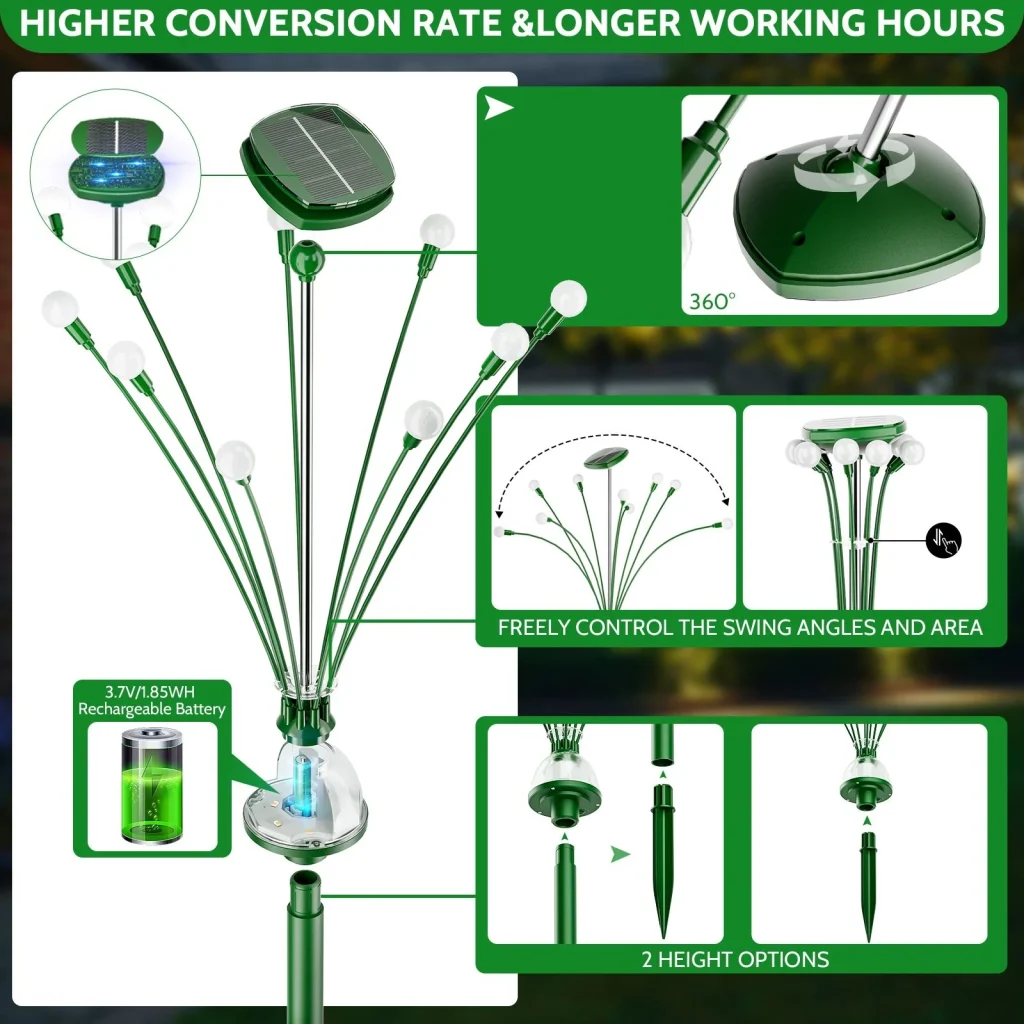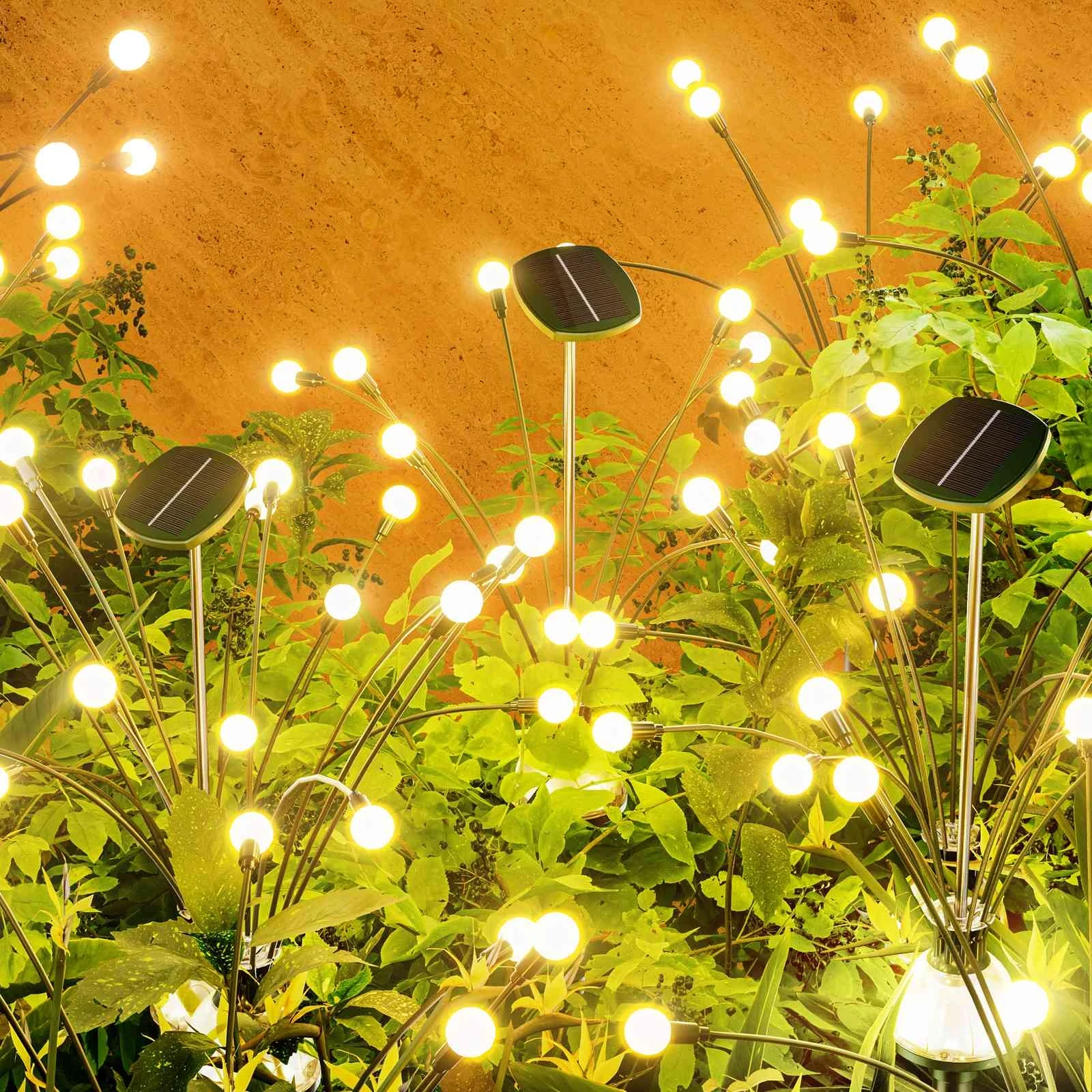The Rise of Solar Firefly Lights
Solar firefly lights have emerged as a captivating innovation in outdoor lighting, blending eco-friendly technology with the enchanting flicker of fireflies. These lights harness solar energy to create a sustainable, visually stunning glow that mimics nature’s bioluminescence. By combining advanced solar panels, efficient LEDs, and clever design, they offer an environmentally conscious alternative to traditional lighting, transforming gardens, pathways, and patios into magical nighttime displays.

Powering the Glow: Solar Panels and LEDs
At the core of solar firefly lights are two key components: photovoltaic (PV) solar panels and light-emitting diodes (LEDs). The solar panel, typically made of polycrystalline silicon, converts sunlight into electricity through the photovoltaic effect. During the day, this energy charges a rechargeable battery (often lithium-ion or NiMH), storing power for nighttime use. LEDs, known for their low energy consumption and long lifespan, then convert this stored electricity into light. Modern LEDs used in firefly lights consume as little as 0.1 watts per bulb, achieving high luminous efficacy (up to 100 lumens per watt) while maintaining efficiency.
Mimicking Nature’s Flicker
The hallmark of solar firefly lights is their ability to replicate the soft, intermittent glow of fireflies. This is achieved through pulse-width modulation (PWM) circuits that control LED brightness and timing. By varying the electrical current, the circuit creates a flickering effect, with intervals designed to mimic the natural rhythm of firefly bioluminescence (typically 0.5–2 seconds). Some models use flexible stems or wires that sway in the wind, enhancing the illusion of floating fireflies. Advanced designs incorporate microcontrollers to offer multiple modes, such as steady glow or randomized flashing, further emulating natural patterns. Warm white or yellow-green LEDs (color temperatures of 2200–3000K) are chosen to match the spectral output of real fireflies.
Environmental Benefits and Practical Applications
Solar firefly lights excel in energy efficiency, drawing zero grid power and reducing carbon footprints. A typical set with 10 LEDs consumes less than 1 watt per hour, compared to 10–20 watts for incandescent alternatives. Their IP65 or higher weatherproof ratings ensure durability in rain, snow, or heat, making them ideal for year-round outdoor use. Applications range from aesthetic enhancements in gardens and patios to functional lighting for pathways and event spaces. Their easy installation—no wiring required—makes them accessible for homeowners and businesses alike. Additionally, their eco-friendly design aligns with global sustainability goals, reducing reliance on fossil fuel-based lighting.
The Future of Bioluminescent-Inspired Lighting
The technology behind solar firefly lights showcases the power of combining renewable energy with biomimicry. By leveraging solar power and sophisticated LED controls, these lights deliver both aesthetic charm and environmental benefits. As solar panel efficiency improves and LED technology advances, future iterations may offer brighter, longer-lasting glows with even more realistic flickering patterns. This innovation not only enhances outdoor spaces but also paves the way for sustainable lighting solutions with broader applications. Solar firefly lights are a testament to how technology can harmonize with nature, illuminating the path toward a greener future.


Leave a Reply